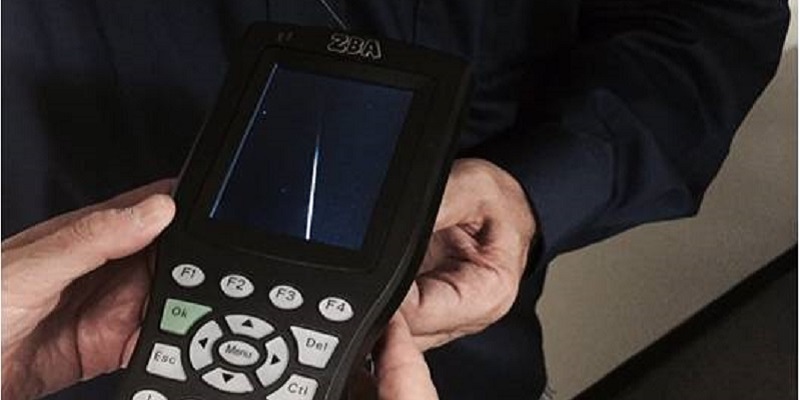
A thread with an integrated taggant is found using one of Lepton-id’s standard detectors. (Image: Lepton-id)
The production of counterfeit clothing is a problem. To combat the worldwide issue, New Jersey-based product security company Lepton-id has developed a security thread that can help to determine whether a piece of clothing is authentic or fake.
To test the fabric, and thus determine authenticity, one would scan the piece of clothing, made with Lepton-id’s optically responsive thread, with one of Lepton-id’s optical detectors. According to the company, which announced the security thread in a Monday press release, the scanning of the Lepton-id tag provides “forensic proof” that the article of clothing is legitimate—an answer to what Lepton-id views to be the top issue for customers, “brand protection.”
“Technological protection is seen to be the best way to avoid the problem in counterfeit apparel, divergent product and brand protection,” Lepton-id claimed.
The optical security taggants are applied within the fibers of thread through a special procedure. The miniscule technology is actually placed inside the fibers of the thread in a way that prevents the technology from being washed away. The practice of removing the taggants from the thread is virtually impossible—the technology can only be removed by cutting out every piece of thread that was used to make the clothing.
Appearance is undoubtedly one of the most important characteristics of a piece of clothing—seeing a large, possible intrusive type of patch of authenticity isn’t desirable. As a result, Lepton-id created a technology that isn’t visible to the eye. It also can’t be traced by UV detection systems. Also, the flexibility, overall appearance, and strength of the thread is unaltered by the incorporation of the optical security taggants.
The specialized thread can be placed into any type of sewing machine that uses that size of thread. Since the correct size is being used, the thread won’t clog the machine during the sewing process.
Lepton-id has created two different types of optical detectors. One type, the VI1170, detects the taggants placed into the thread. The VL6300 has the ability to spot the entire hidden image that is created when the thread is sewed into the apparel. While checking the garment’s authenticity, the person conducting the examination would have to know where the taggant should have been placed—a misplaced taggants would quickly prove that the garment is fake.
Lepton-id plants will present the optically responsive material and the optical detectors in a number of businesses configurations, such as technology licensing or direct OEM sales. The company will offer both standard and customized versions of the technology, depending on the needs of the businesses.
Lepton-id is a subsidiary of New Jersey-based automated identification company ZBA.
Filed Under: Industrial automation




